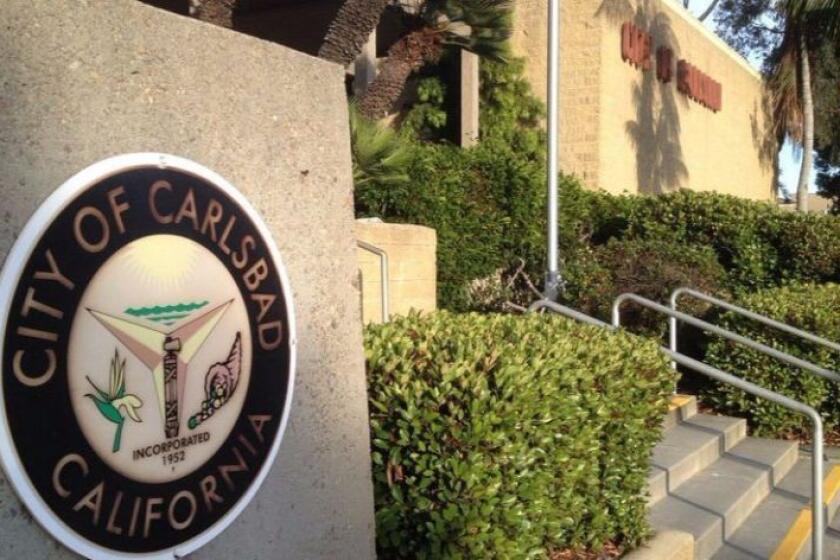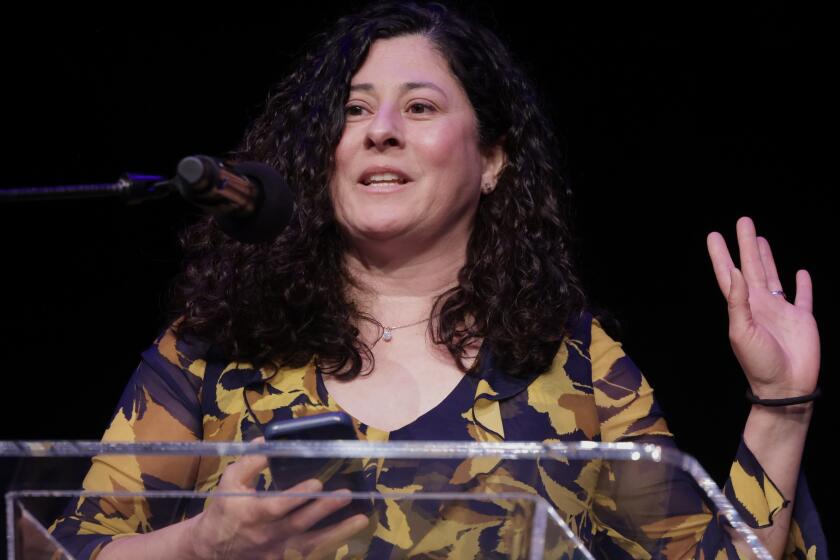In Oceanside, you only need to be 18 and a resident to be city treasurer. That may change

City Council may set minimum standards for elected position
Oceanside, one of the few California cities that still elects its municipal treasurer, is preparing to set its first minimum qualifications for the job.
As soon as next month, the City Council will consider new standards for the position, prompted in part by recent complaints about City Treasurer Victor Roy, whose qualifications were questioned in a recent public dispute with an employee in his office.
An independent investigation commissioned by the city attorney found that Roy had engaged in “bickering” and “petty workplace disputes,” and it confirmed a departmental report that Roy had downloaded nude images from a public computer in the city library.
Despite those issues, the investigation found that Roy had fulfilled his required duties as treasurer. Any financial losses in the city’s $450 million portfolio were the result of widespread market fluctuations and not Roy’s management, according to the report by the Zappia Law Firm of Huntington Beach.
Roy has declined to discuss the issues in the report, saying only that the city’s investments have remained safe under his watch.
State law requires every city to have a municipal treasurer, though the position can be elected or appointed. Five of the 18 cities in San Diego County have elected treasurers — Carlsbad, Escondido, La Mesa, National City and Oceanside. The position is considered part time in each city.
Appointing the city treasurer allows a much wider recruiting process and specific standards for the candidates’ education and background. Candidates could come from anywhere in the country, instead of only within the city. The disadvantage is that an appointed treasurer is responsible to an administrator, such as the city manager and not to the electorate.
Roy received a geology degree from the University of California Los Angeles in 1970, according to the Zappia report. He retired after 27 years in aviation industry ground services and has experience with CDs, bonds and other types of investments, he said.
Oceanside voters defeated a ballot measure by a 3-to-1 margin in March 2020 that would have switched both the city treasurer and the city clerk to appointed positions.
Oceanside is not the only North County city where voters prefer to elect their treasurer. In nearby Carlsbad, ballot measures that would have switched the position to an appointee were defeated in 1990, 1980, 1964 and 1956, a city official said.
Unlike Oceanside, where any registered voter at least 18 years old can run for treasurer, Carlsbad has minimum requirements for the position. Carlsbad requires candidates to have a four-year college degree in finance or a business-related field and four years of financial work experience at the time their nomination papers are issued.
National City voters rejected the switch by a majority of 52 percent in 2020, but this November will vote again on a possible switch to appointments. National City’s treasurer, Mitch Beauchamp, is a former City Council member first elected to the financial job in 2008. He was unopposed for re-election in 2020.
A city treasurer’s duties are spelled out by state and local laws, so they can vary from city to city.
Oceanside’s municipal code says the city treasurer should work with the financial services director to ensure the city follows an investment policy adopted by the City Council.
The treasurer can recommend the City Council make changes to the policy, but does no actual investing. The city’s full-time employees are responsible for the actual investing and management of the money.
Oceanside officials said earlier this month they are considering contracting with an outside investments management firm to replace their full-time treasury manager, Steve Hodges, who steps down from the job Nov. 1.
“We are taking a different approach (than in the past) to this function for the city,” Assistant City Manager Michael Gossman said earlier his month. “There are a lot of firms both locally and statewide that provide these types of services.”
The city treasurer is a watchdog position and it’s important to have a qualified official in that role, said Haney Hong, president and CEO of the San Diego County Taxpayers Association.
“You want people who are experts in finance and accounting,” Hong said in a recent telephone interview.
Whether the person is elected or appointed is less important than if the person is well qualified to do the job, he said. The city manager and the city council also have oversight responsibilities.
“You don’t get more watchdog just by having someone elected,” he said. “Look at the federal government. We elect one position, the president of the United States, and he puts experts in their respective areas.”
No special qualifications are required to run for president, Hong said. The only requirements are that the candidate be at least 35 years old and a U.S. citizen.
“You have to be careful when you put requirements on elective positions,” he said. “It can become very subjective ... if people start to pile on additional requirements.”
An appointment is different, he said. The job becomes more of a technical position with lots of detail work to be done, and so more specific qualifications as to education and experience are required.
The California Municipal Treasurers Association is the professional society for public treasurers in California counties, cities and special districts.
It has about 300 members, about half of whom are elected and half are appointed, an employee in the Sacramento office said Wednesday.
About one-third of the association’s members are certified California municipal treasurers, including Oceanside’s Victor Roy, the employee said.
Certification requires a a bachelor’s degree in a related field and a minimum of two years of treasury, finance or investment related experience, or six years of related financial experience.
Maintenance of the certification requires 20 hours of continuing professional education a year, which can include time spent at conferences and in webinars.
Get North County news in your inbox
Top stories from the San Diego North County every Monday, Wednesday, and Friday.
You may occasionally receive promotional content from the San Diego Union-Tribune.









